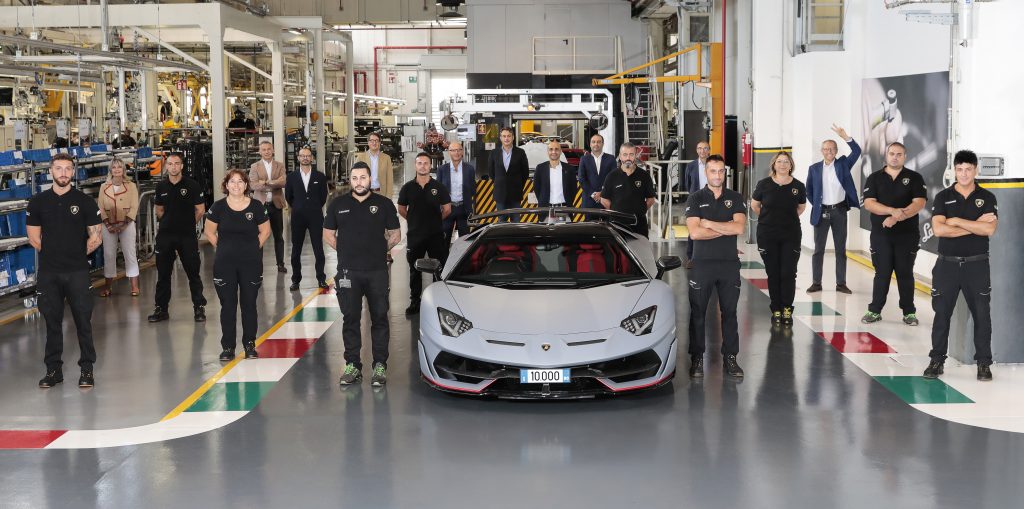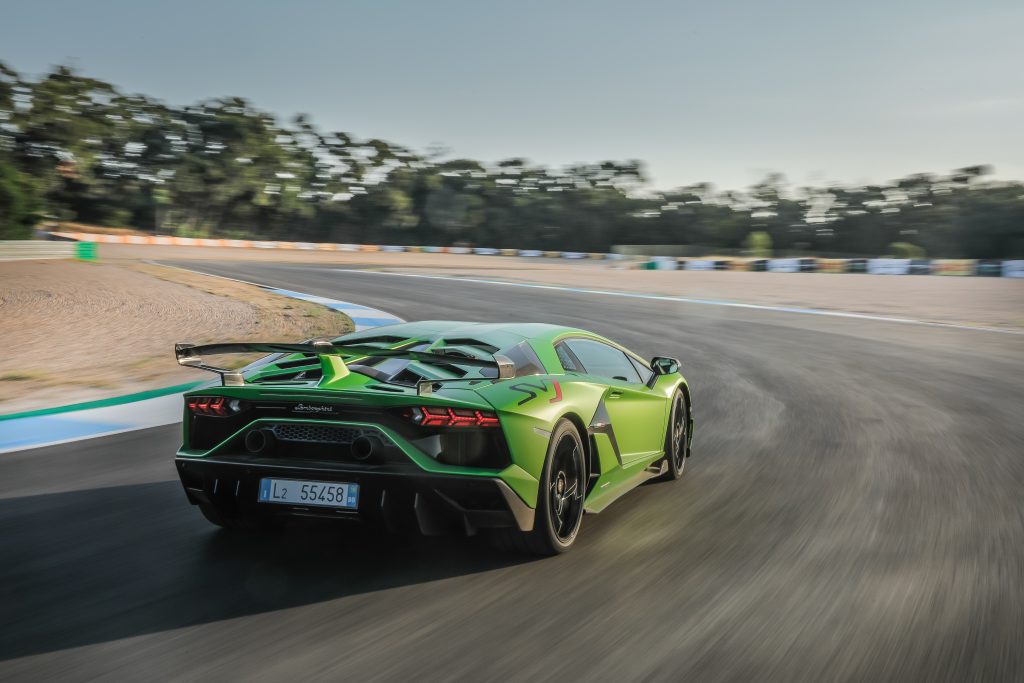In the pantheon of so-called quixotic exotics, the Aventador stands alone. And now, almost a decade after its launch in 2011, the supercar Lamborghini Aventador has already reached a milestone. Sant’Agata Bolognese-headquartered Automobili Lamborghini recently rolled out from its production line 10,000th unit of its V12-powered sports car. For the record, Number 10,000 is an Grigio Acheso (gray)-colored SVJ Roadster with Rosso Mimir (red) livery and Ad Personam interiors in Rosso Alala (red) and Nero (black).

The Aventador nameplate made its first appearance in 2011 via the Aventador LP 700-4, “a coupé version model that immediately became a new benchmark for the super sports car sector owing to the introduction of new technological solutions.”
Aside from its exotic, jaw-dropping looks, the Aventador features an “innovative carbon fiber monocoque — which combines the cockpit, floor, and roof of the car in a single structure.” Powering it is a high-performance V12 especially developed then for the LP 700-4 — a 700hp that set a new standard for super sports cars when the Aventador was introduced. This propelled the vehicle from standstill to 100kph in 2.9 seconds, onward to a top rate of 350kph. The car also paid homage to the iconic Countach via its upward-opening doors.

The Italian carmaker unveiled the Aventador Roadster in November 2012, whose two-section roof is composed entirely of carbon fiber — with each section weighing less than 6kg. Meanwhile, the removable roof was engineered with a rear pillar not just for proper support, but to “house an automatic passenger protection system and to ventilate the engine compartment sufficiently.” The Aventador J, on the other hand, dispenses with the roof and classic windshield altogether as an “open” super sports car that still reach speeds above 300kph.
The Aventador Miura Homage, presented in 2016, pays tribute to the 50-year-old Miura, which predated the V12 super sports car. Only 50 examples were made of the vehicle, which channeled the Mira in features and colors. In the same year, the Aventador S rolled out – with a 6.5-liter, V12 heart pumping out 740hp. Lamborghini sought to combine four “engineering masterpieces” in the S: four-wheel drive, a new active suspension, four-wheel steering, and a new Ego driving mode, “which allows the driver to choose from several additional configuration profiles.”

The suffix of the aforementioned Aventador SVJ stands for “superveloce” and “jota,” referring to the car’s “superiority on the track and in terms of performance.” The SVJ made a name for itself as the fastest production vehicle on the Nürburgring’s Nordschleife track – blazing through the 20.6-km course in only 6:44.97. Production was limited to only 900 units. An even rarer SVJ 63, with more extensive use of carbon fiber, featured only 63 units to honor the year Automobili Lamborghini was founded: 1963.
Last year, the one-off Aventador S by Skyler Grey was presented as an art piece. The artist was asked to use an airbrush, spray guns, rollers, and stencils to personalize the car body his special “pop” style in orange and yellow. The car was painted over three weeks in the company’s new paint shop.
As with many of its Lambo siblings, the mid-engine Aventador is named after a famous Spanish fighting bull.

